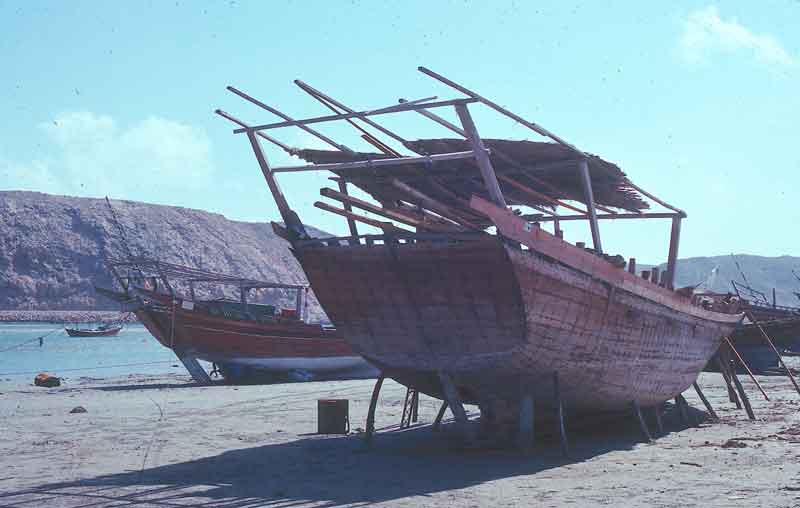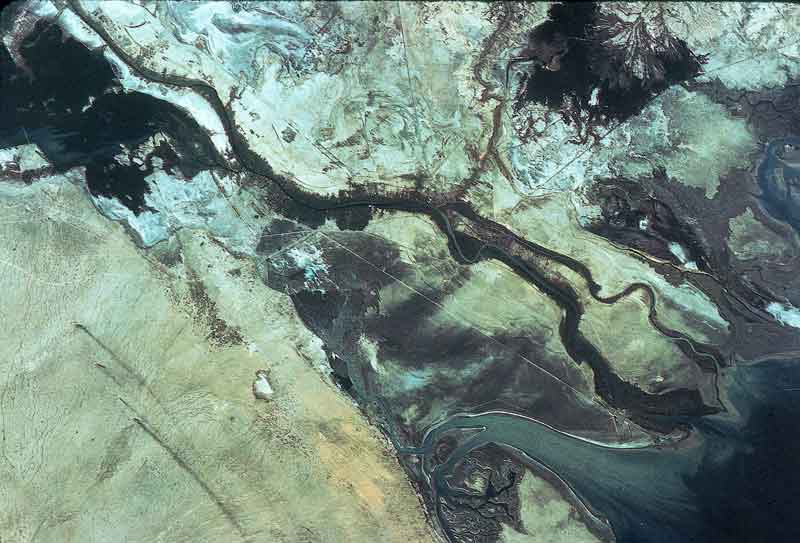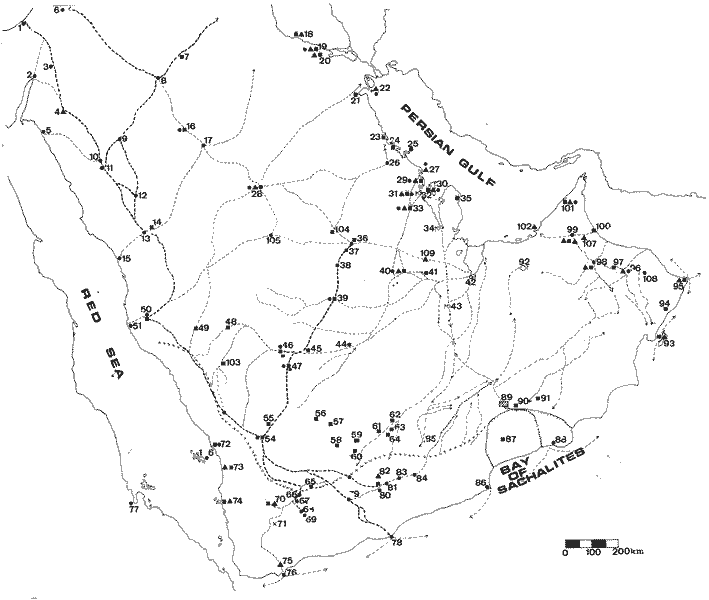The Archaeology Fund
Eden/Dilmun
|
The ancient Sumerians living in southern Iraq, from the beginning of writing ca. 3000 B.C., described a semi-mythical region which lay to the south of them and from which they had originated in the dawn of time. Called Dilmun in the earliest texts (Uruk IV period),[ BA-012] the sea world and the lands along it took on a mythical perspective. The Sumerians described the land there as free of pain and sorrow with people of the region achieving immortality. They recorded their ideas in such accounts as Enki and the World Order, Gilgamesh and the Land of the Living and The Sumerian Genesis. Sumerian economic texts took a more sober and business-like approach in describing the region, noting the origins of precious stones, copper, amazing plants and animals, as well as timber and building stone [IC-007]. By 2200 B.C. the land of Dilmun was described together with more distant locations such as Magan and Meluhha. In most cases, these locations were reached by specials ships [IC-079] and sailors. Where were these lands and what role did modern geology and archaeology play in locating them? The concept of “Paradise Land” known already from Assyrian copies discovered in the mid-nineteenth century, had an immediate impact on Biblical scholarship as researchers quickly realized that the Genesis 2 accounts of creation utilized words (Eden, Adam, rivers), phrases (creation of man from clay), and descriptions (Four rivers including the Tigris and Euphrates) which were to parallel to a remarkable degree the much earlier Sumerian land of Dilmun. By the mid-twentieth century, most scholars suggested that Dilmun lay in the Persian Gulf region and more specifically with the lands on the Arabian side such as Kuwait, Bahrain, and Eastern Saudi Arabia. Most dramatically, excavations at the Sumerian city of Eridu [IC-019], where the Sumerians stated they had come ashore to establish first, revealed material sequences stretching back to 5500 B.C. This early prehistoric period called the Ubaid, was recognized by its distinctive ceramic vessels painted in vivid black color and beautiful designs. By 1970, such pottery had been reported from Bahrain, Iran, Eastern Saudi Arabia and eventually Qatar, Kuwait, and the United Arab Emirates. Thus, one could hypothesize a link between the earliest inhabitants of southern Mesopotamia and Ubaid sites along the periphery of the Gulf. It was left to the German researchers aboard the ship Meteor in 1969, to conduct detailed work in the Persian Gulf and corroborate ideas that the Gulf had lain dry during and just after the last major glaciation, ca.60,000- 10,000 B.C. Rivers and streams flowing into the dry Gulf from adjoining areas could be traced along its entirety. Hence, the earliest inhabitants lived along such oases (“gardens”) in a long dry plain (eden/edin). The slow infilling of the marine waters drowned these river systems and associated oases and dune fields along their path. Today, therefore, we see only the later surviving settlements along the high stands of the marine infilling in Bahrain, Kuwait, Saudi Arabia, Qatar and the Emirates. By 5000 B.C. the infilling had pushed even three m. higher than present and created a shoreline in southern Iraq that was quite distant from the present day one. Such being the case, present day sea-levels were achieved only after 2000 B.C. for the region [IC-083]. These facts suggested that the Sumerians and their predecessors had lived along the now vanished rivers and springs until forced to move northward into the Sumerian plain and Eridu, thus creating civilization. The Persian Gulf region then, was a link first by riverine travel and later by marine sailing between our incense lands to the south and goods moving from India (Meluhha) and northern Oman and Persia (called Magan). Much of the documented early trade firmly ties Northern Oman and India to the Dilmun region. Only more recently, have we found links between our incense lands of Southern Arabia and the Dilmun region. An incense burner excavated in northern Oman and dating to the Bronze Age (ca. 2200 B.C.) contained residue identified as frankincense. A copal bead from East Africa (see link) has been recovered in the same period from Eshnunna a Sumerian/Akkadian city far up the Tigris on the Diyala tributary. Thus, Dilmun acted as a large scale entrepot, a type of Hong Kong, attracting goods from seaborne trade linking East frica, southern Arabia and India. Much of Arabia also participated in the early trade because of a wetter climate until 2000 B.C. [IC-010, IC-032, IC-033] The ICTZ,[ IC-070] located much further to north, ([IT-022]link) facilitated overland trade along prominent river systems even through the now formidable Rub al Khali [IC-067]. Such climatic and geographical conditions tied the southern Arabian incense lands and Eastern Arabia directly to the ancient Sumerians until 2000 B.C. |
|






